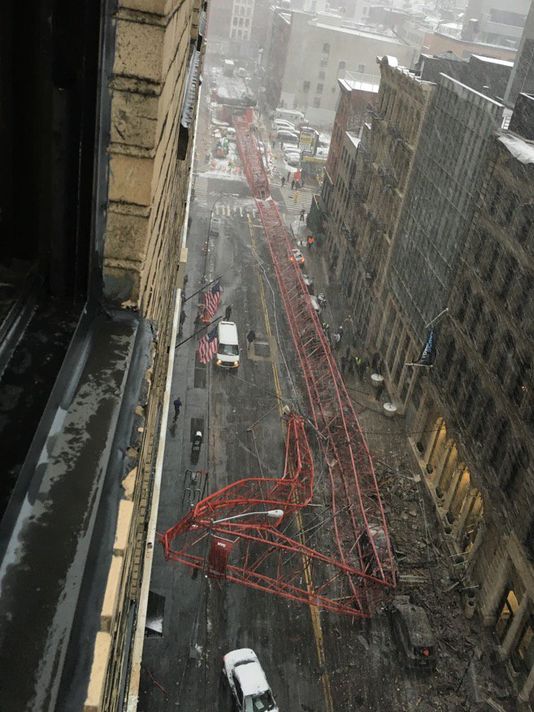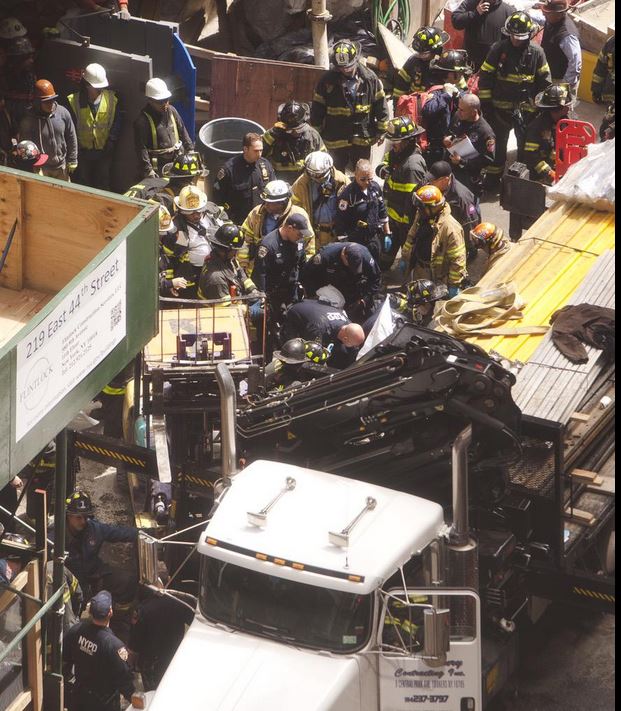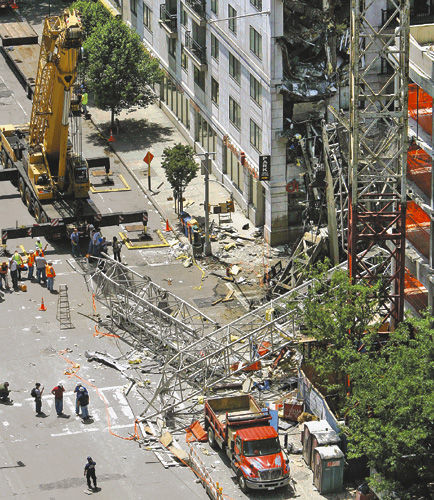To prevent fatal construction accidents in New York such as last week’s crane accident, Mayor de Blasio announces increased inspections of construction sites and higher penalties for safety hazards
 A week after a man died in a crane collapse in New York, the Mayor announced that the city will kick off a massive inspection blitz of construction sites and quadruple penalties for serious violations of safety on construction sites. The construction boom in the city has led to a dramatic increase of construction accidents. Last year there were 433 accidents, an increase of 75% compared to 2014. Before the boom in 2009 there were 218 accidents, 98% less than in 2015. According to DOT investigations, most of the construction accidents that happened last year in New York City could have been prevented if the contractor had simply followed the existing safety rules. Unfortunately too often contractors and developers are cutting corners and putting the life of their workers at risk to increase their profit.
A week after a man died in a crane collapse in New York, the Mayor announced that the city will kick off a massive inspection blitz of construction sites and quadruple penalties for serious violations of safety on construction sites. The construction boom in the city has led to a dramatic increase of construction accidents. Last year there were 433 accidents, an increase of 75% compared to 2014. Before the boom in 2009 there were 218 accidents, 98% less than in 2015. According to DOT investigations, most of the construction accidents that happened last year in New York City could have been prevented if the contractor had simply followed the existing safety rules. Unfortunately too often contractors and developers are cutting corners and putting the life of their workers at risk to increase their profit.
Despite the cold weather Mayor de Blasio held his press conference in front of a East Village Construction site where a construction worker fell to his death on Christmas Eve. 33 year old Luis Alberto Pomboza, was working on the renovation of a multi-family townhouse at 356 East 8th Street. Pomboza was demolishing a wall when a large portion of the wall fell on him and caused him to fall 4 stories. An Ecuadorian immigrant and father of 5, Pomboza was transported to the hospital in critical condition. He later died there from serious head trauma. The construction site superintendent who was legally required to be on the construction site to ensure the safety of workers and the public wasn’t there when the accident happened. De Blasio indicated that last year 70% of the construction accidents in New York City occurred in buildings with 10 stories or less. Therefore the investigation blitz that starts this week will focus on these types of construction sites. Inspectors will target contractors with bad safety records and working on buildings lower than 10 stories as well as all construction sites higher than 15 stories. The DOB will inspect a total of 1,500 job sites in the 90 coming days.
Fines for “serious failures to safeguard construction sites” will increase from $2,400 to $10,000 and if the construction site is lacking a site superintendent the penalty will reach a maximum of $25,000 instead of $5,000. Additionally starting in July, superintendents will be required for all major construction projects at buildings under 10 stories. Superintendents will be required to log daily reviews of site safety.
 New York Personal Injury Attorneys Blog
New York Personal Injury Attorneys Blog




 The long legal battle that ensued after two
The long legal battle that ensued after two  During Hurricane Sandy,
During Hurricane Sandy, 